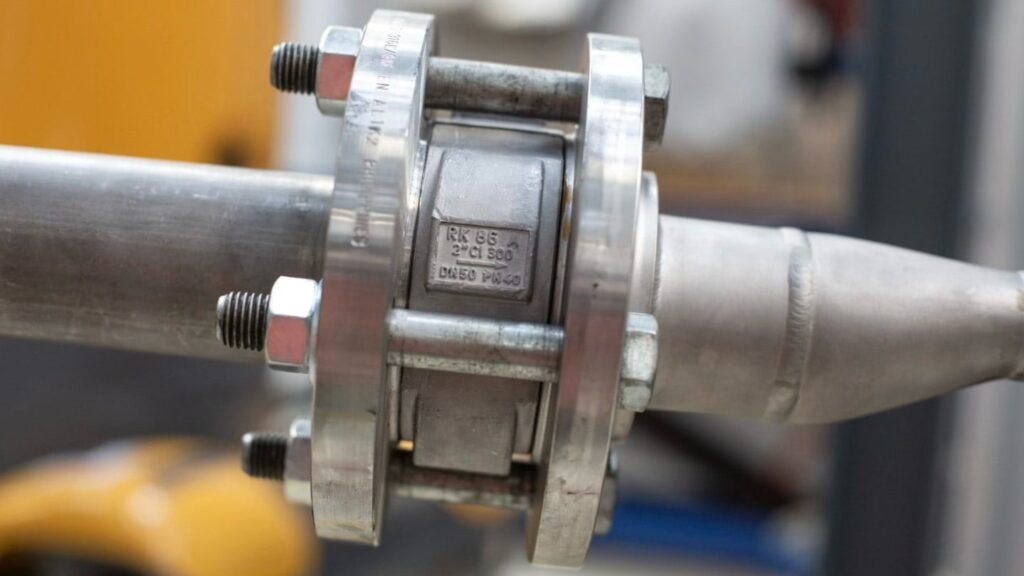In the industrial processes, non-return valves give essential service in avoiding back flow, thus safeguarding systems and equipment and facilitating the efficient process. In this guide, information on the basic types and construction of non-return valves, their application and maintenance is presented. This paper aims at aiding B2B buying decisions in choosing the right non-return valves for their organizations.
What is a Non-Return Valve
A check valve is another type of valve which is used to permit flow in only one direction, but it is also known as a non-return valve. This one way flow is useful in industries where backflow is dangerous or may contaminate or pose a threat to safety. Non-return valves are common in industries including oil and gas, water, chemical processing and HVAC.
The simplest form of a non return valve is a mechanical device that has a passageway that opens to forward direction movement and closes in the reverse direction when pressure changes occur. This kind of control function enables the systems to run on auto-pilot and without further human interference or intricate control mechanisms.
Types of Non-Return Valves
Non-return valves are of different types and each is designed to serve different utilities and demands. The following is a comparison between the various types of valves that is important to guide one in choosing the right valve for certain industrial applications.
– Swing Check Valves: Swing check valves which come with a hinged disc which opens and closes with forward flow are ideal for low velocity applications such as the water and wastewater industry.
– Ball Check Valves: This provides operation for viscous fluids or slurry applications, as a ball moves to align with or away from the downstream connection to open or close the flow path of these valves.
– Lift Check Valves: These have a disc that opens when flow is desired and closes to prevent the reverse flow when flow is not desired. Lift check valves are especially suitable for high pressure and are suitable for fluids such as steam or gas.
– Disc Check Valves: One of the familiar types of check valves, disc check valves have a minimum size and are available in small sizes due to their disc design; they can be used where piping space is restricted.
– Wafer Check Valves: As their name suggests, the thin disks of a wafer check valve make it compact and easy to install on pipes, especially where space is a problem as between flanges; it is best used in high volume systems where weight and size are considerations.
Both types provide specific advantages based on flow rate, pressure, and available installation space which provide efficiency for a company’s system and require low amounts of maintenance.
Key Materials and Construction
Material of construction greatly affects the strength, corrosion resistance, and application of a non-return valve. Non-return valves, therefore, can be produced from stainless steel, cast iron, brass and other alloys where necessary.
– Stainless Steel: This kind of valve is able to withstand corrosive processes and is used in harsh conditions for example in chemical and petroleum production industries ice.
– Cast Iron: The cast iron valves are the toughest and relatively cheaper hence ideal in applications where cost is a key factor such as in water and sewage.
– Brass: They have high corrosion resistance and good thermal conductivity; they can be used widely in plumbing, HVAC and low-pressure applications.
– Alloys: Monel or Hastelloy valves are used when corrosion is a high factor or where the valves are to be used under high temperatures.
Selection of right material also contributes to the longevity of the valves, cuts down maintenance and guarantees the consistency of the complete apparatus.
Applications of Non-Return Valves
Non-return valves are necessary in different industries, and their application is increasing year by year. Below are some key applications:
– Water and Wastewater Management: In water supply and sewage systems non-return valves discourage contamination by preventing backflow of sewage into the clean water supply.
– Oil and Gas Industry: Non-return valves are used to stop reverse flow of a fluid in a pipeline, this aspect may lead to failure or mixing of wrong fluids.
– Chemical Processing: These valves are commonly applied in chemical plants to regulate flow of some dangerous chemicals to ensure that back flow that may lead to another chemical innovation or polluting the system is prevented.
– HVAC Systems: In heating, ventilating and air conditioning systems, the non-return valves are used to maintain pressure of the system and also to prevent backflow.
It is important to have the right non-return valve type to use in an application to enhance the operation, safety, and reduce the cost.
Maintenance Best Practices
Non-return valves must be serviced at agreed intervals regularly to ensure they do not fail and they last long. Here are some key maintenance practices:
– Regular Inspections: The valves should preferably be inspected for any sign of wear, corrosion or blockage and this should be done often. Time-to-failure issues can, therefore, be detected early, avert untimely breakdowns, and save resources.
– Cleaning and Lubrication: Certain types of non-return valves should be cleaned periodically or when a layer of dirt accumulates that may hinder its usage. This also applies to problems of lubrication which must be correct to avoid friction and hence improvement of moving parts.
– Pressure Testing: Pressure tests can be performed, which will reveal the valve’s performance when in working condition and whether or not it will leak when in high pressure applications.
– Replacing Worn Components: The valve may wear out or corrode with time, hence the effectiveness of the valve declines. One of the most effective methods is to change the sealing elements, gaskets, and springs, which increases the resource and operational characteristics of the valve.
Adopting these maintenance practices enables to improve the dependability of the system and decrease the possibility of failure incidences as well as lower mean repair cost in the long run.
Aspects of the non-return valves in the industry
Technological improvements in valve engineering are evolving non-return valves for the requirements of contemporary industrial processes. Some of the latest trends include:
– Smart Valves: Intelligent non-return valves with sensors offer real time information on flow rates, pressure and temperature for timely maintenance and to reduce failure risks.
– Eco-Friendly Designs: As the environmental laws become more stringent, manufacturers have come up with environment-friendly valves that lower on emissions and energy usage to help firms meet environmental policies.
– Compact and Lightweight Valves: Development in material science and engineering has made possible miniaturization of the valves without compromising on the performance and these are ideal for new industrial processes where space and weight are critical factors.
As these trends persist, companies stand to gain better valve performance, low costs and increased compliance with standard setting agencies.
For those companies which are interested in purchasing high quality and effectively operating non-return valves, Dombor provides check valves for industry use. Explore their selection here https://www.dombor.com/es/product-category/check-valves/ to get a solution for your operations.
In conclusion, understanding the types, materials, applications, and maintenance of non-return valves is essential for industries aiming to enhance safety and performance in their operations. By choosing the right non-return valve and following proper maintenance protocols, B2B companies can achieve optimal efficiency and longevity for their industrial systems.

